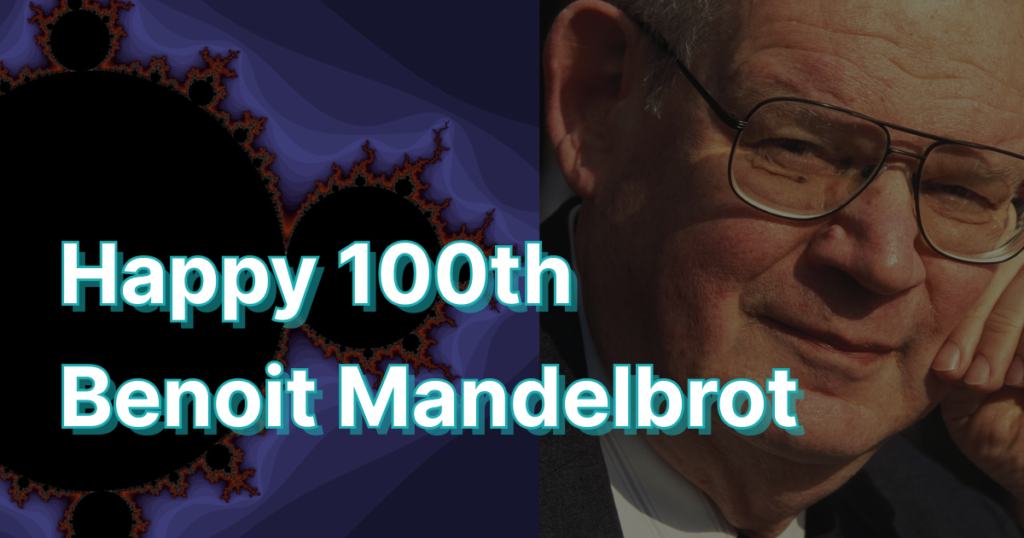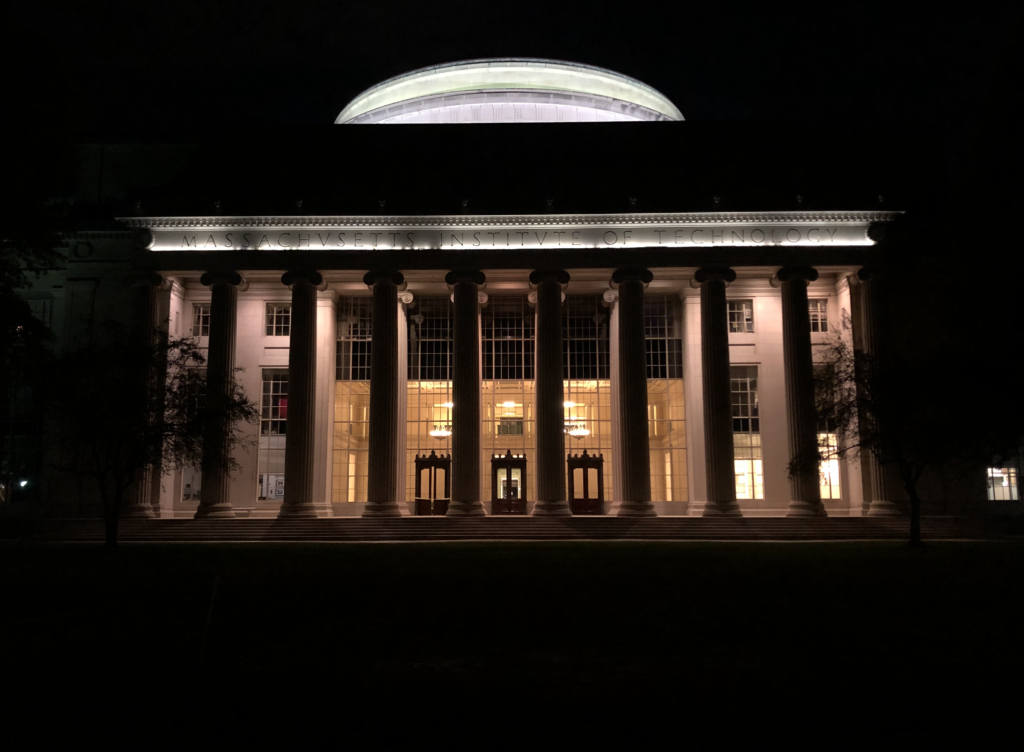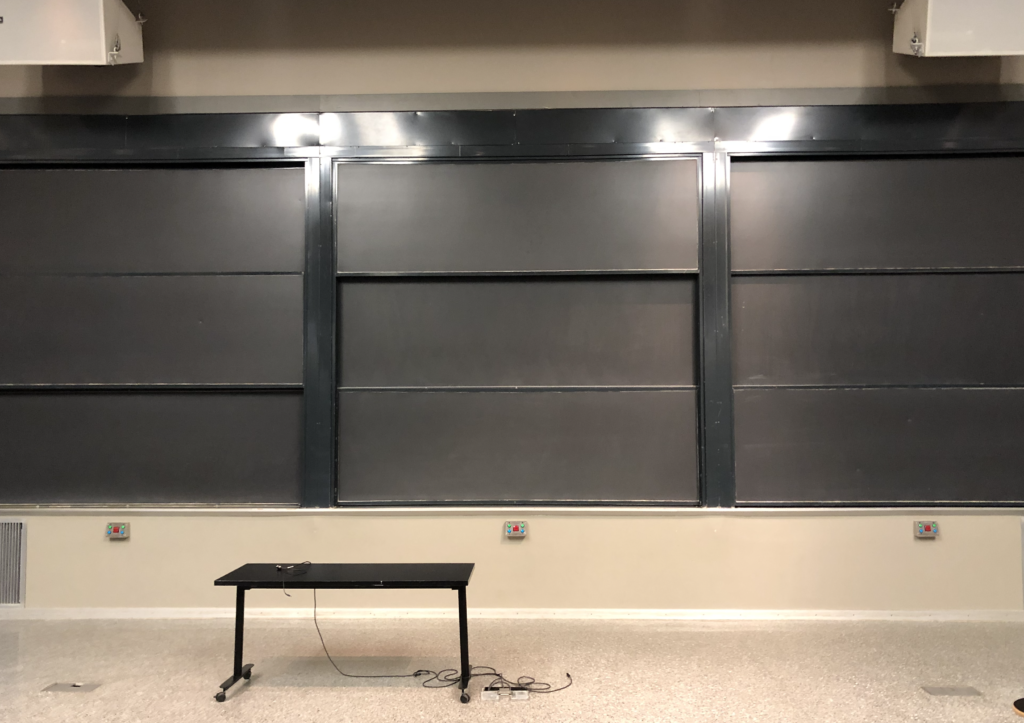
Ever had an experience that goes on to radically alter the course of your life, but the shift wasn’t obvious to you in the moment? For me, one of these moments started with a crumpled note taped to an MIT elevator wall: “Benoit Mandelbrot. Today. 10-250.” The note wasn’t there hours before when I first rode up.
I thought it was a prank, or “hack” as known around campus where such elaborate pranks were a way of life. One of the most brilliant minds in history, doing a pop-up lecture… announced by a handwritten note?
Before I tell you what happened next, you should know why Mandelbrot matters if you don’t already know. He fundamentally changed how we see the universe. Before him, we tried to understand nature through perfect circles and straight lines. But Mandelbrot showed us that nature speaks a different language – one of rough edges and self-similar patterns that repeat at different scales. He called these patterns “fractals,” and suddenly we had a new way to understand everything from coastlines to blood vessels, from stock markets to galaxies.
His insights weren’t just theoretical. Every major discipline has been impacted by his insights in some way. Without Mandelbrot’s work, we wouldn’t have the computer graphics that power modern movies and games. The early pioneers at Lucasfilm used his principles to create the first convincing CGI landscapes. His theories help us model financial markets, predict weather patterns, and understand how our lungs branch and our neurons connect. He showed us that nature’s “imperfections” aren’t flaws – they’re features.

Back to that random early eve in Fall 2008, lecture hall 10-250. I showed up a few minutes before. Empty. The time comes. No one. Normal: “MIT time” starts 5 minutes late. But this usually meant most people are in the room on time and settling in with a few stragglers.

It must be a prank. I started looking for the candid camera filming the idiot who fell for the note.
The door opened. In walks a tiny giant.
Diminutive stature. Room-shattering presence.
Behind him, a small entourage of students follow. An assistant sets up a projector, which soon displays a perfectly forgettable image I’ll never be able to forget: a photo of trees on a rocky mountain.
What followed was unlike any lecture I’d attended. Mandelbrot, 84 at the time, had a tack sharp sense of humor. He shared highlights of his journey with an almost punk rock vibe, including stories about white-hatting IBM’s spare compute resources to explore what would become the famous Mandelbrot Set.
Between the mathematics came flashes of biting comedy and profound insight. Incredibly humble, he didn’t talk about how much he’d changed the world. But anyone who looks at his work for more than a few minutes is forced to confront the fact that Benoit Mandelbrot made some of the greatest contributions to humankind in all of history, not just recent history.
I’ve had lifelong tics and fidgets, typical mild spectrum habits. This, coupled with the anxiety of being in over my head at a school where “drinking from the fire hose” is the norm, he noticed me. He paused mid-presentation, looked me in the eye, and said: “Anxiety is a form of masochism in which some of us choose to self-indulge.” I was startled at the time, and wrote it down. Years later I began to wonder whether he was speaking from personal experience – casually sharing a lesson he’d learned – that we in fact choose to direct what otherwise seem like subconscious impulses.
All the while, the projector glowed with the tree-lined mountain. But in the conclusion, to bring home his final point about self-similarity, and the scale within scale nature of the Cosmos, he “zoomed out” to reveal the reality: the initial photo was moss on a rock, sitting on a tree-covered mountain.
Nature’s signature, hiding in plain sight. One of infinite daily examples we by default ignore.
As we celebrate what would have been his 100th birthday, I’m struck by how Mandelbrot’s insights reach far beyond mathematics. He helped me see that we’re at once inhabitants of our corner of the Cosmos and, perhaps, floating around on a subatomic particle in someone else’s scale. That heart-stoppingly beautiful complexity emerges from simple rules. That what looks like chaos often hides deep cosmic patterns.
The Mandelbrot Set – the cosmic mathematical object he discovered – might be the closest thing we have to a map of God’s mind. If we are, as Carl Sagan said, “a way for the Cosmos to know itself,” then Mandelbrot scored us one of our most powerful lenses.
Happy 100th, Dr. Mandelbrot. And thank you for helping us see the beauty in roughness, and for showing us that nature’s messiness isn’t a mistake – it’s the very language of the universe. Someday my friend Nathan and I hope to build a Mandelbrot Museum of the Cosmos containing your works, and subsequent discoveries made in the field you found hidden in nature to help others to see, as you’ve helped us to see.
Notes: Key works and references included “The Fractal Geometry of Nature” (1982), “Fractals: Form, Chance and Dimension” (1977), and pioneering CGI work like Loren Carpenter’s “Vol Libre.” Mandelbrot was Sterling Professor at Yale and IBM Fellow Emeritus at the T.J. Watson Research Center. For those interested in exploring further, his papers are archived at Stanford University. Thank you to Nathan Black for inputs and Claude AI bringing the story together.

